-
 Bitcoin
Bitcoin $119100
-2.16% -
 Ethereum
Ethereum $4300
-0.31% -
 XRP
XRP $3.171
-2.99% -
 Tether USDt
Tether USDt $1.000
-0.01% -
 BNB
BNB $814.1
-1.33% -
 Solana
Solana $176.5
-4.67% -
 USDC
USDC $0.0000
0.00% -
 Dogecoin
Dogecoin $0.2267
-5.83% -
 TRON
TRON $0.3465
2.15% -
 Cardano
Cardano $0.7870
-4.98% -
 Chainlink
Chainlink $21.66
-2.27% -
 Hyperliquid
Hyperliquid $43.89
-4.62% -
 Stellar
Stellar $0.4414
-3.35% -
 Sui
Sui $3.707
-6.73% -
 Bitcoin Cash
Bitcoin Cash $599.1
3.73% -
 Hedera
Hedera $0.2504
-6.96% -
 Ethena USDe
Ethena USDe $1.001
-0.01% -
 Avalanche
Avalanche $23.21
-4.99% -
 Litecoin
Litecoin $121.1
-3.55% -
 Toncoin
Toncoin $3.415
0.45% -
 UNUS SED LEO
UNUS SED LEO $9.002
-1.24% -
 Shiba Inu
Shiba Inu $0.00001314
-5.43% -
 Uniswap
Uniswap $11.45
1.63% -
 Polkadot
Polkadot $3.926
-5.37% -
 Cronos
Cronos $0.1694
1.63% -
 Ethena
Ethena $0.8117
-2.35% -
 Dai
Dai $1.000
0.00% -
 Bitget Token
Bitget Token $4.422
-1.43% -
 Monero
Monero $264.2
-0.83% -
 Pepe
Pepe $0.00001137
-8.29%
What is the difference between OKEx’s margin trading and contract trading?
Margin trading on OKEx involves borrowing funds to amplify trading power, while contract trading involves buying or selling futures contracts with built-in leverage.
Dec 16, 2024 at 11:22 am
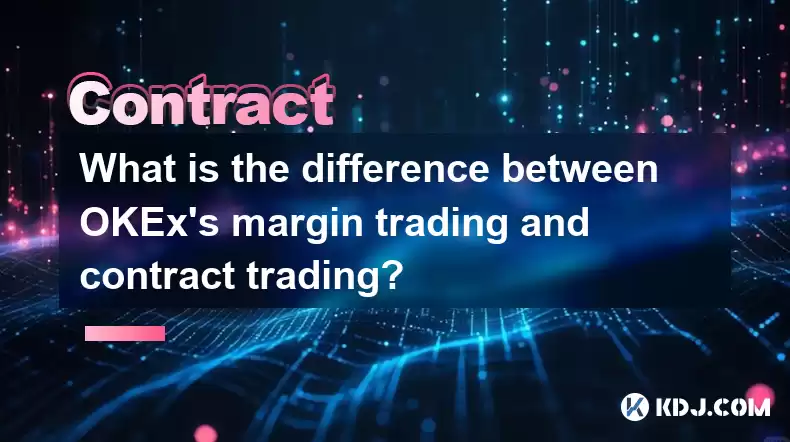
What is Margin Trading vs Contract Trading on OKEx?
OKEx, a leading cryptocurrency exchange, offers both margin trading and contract trading as options for traders seeking to leverage their positions. While both trading types involve borrowing funds to increase trading capital, they differ significantly in their mechanisms, risks, and potential rewards. This article delves into the intricacies of each trading method, highlighting their key distinctions.
Margin Trading on OKEx
Margin trading on OKEx allows traders to borrow funds from the exchange to amplify their buying or selling power. This leverage enables traders to potentially multiply their profits but also exposes them to greater risks.
Steps Involved:
- Open a margin trading account: Traders must create a dedicated margin trading account separate from their spot trading account.
- Deposit collateral: To borrow funds, traders need to deposit collateral in the form of supported cryptocurrencies or stablecoins. The amount of collateral determines the borrowing limit.
- Select a trading pair: Margin trading is available for select trading pairs (e.g., BTC/USDT, ETH/BUSD). Traders choose the pair they wish to trade and set the leverage level.
- Place a trade: Margin traders can place either long (buy) or short (sell) orders, depending on their market outlook. The leverage multiplies the position size, allowing traders to buy or sell more significant amounts than their collateral would typically allow.
- Monitor and manage risk: Margin traders must closely monitor their positions and manage risk by setting stop-loss orders and adjusting leverage as needed. Failure to do so could result in substantial losses if the market moves against their position.
Key Features of Margin Trading:
- Flexible leverage: OKEx offers adjustable leverage levels, allowing traders to tailor their risk appetite.
- Potential for higher returns: By leveraging their capital, traders can increase their potential profits if the market moves in a favorable direction.
- Increased risk: Margin trading amplifies potential profits but also amplifies potential losses. Traders must carefully manage their risk exposure.
Contract Trading on OKEx
Contract trading on OKEx involves buying or selling futures contracts, which are agreements to buy or sell an underlying asset (e.g., BTC, ETH) at a predetermined price on a future date. It allows traders to speculate on future price movements without taking direct ownership of the underlying asset.
Steps Involved:
- Open a contract trading account: Separate from spot and margin trading, contract trading requires a dedicated account on OKEx.
- Funding: Traders need to fund their contract trading account with the underlying asset (e.g., BTC) or a supported stablecoin.
- Select a contract: OKEx offers various types of futures contracts, each with its pricing mechanism and duration. Traders choose the contract they want to trade and determine their position size.
- Place an order: Contract traders can place market orders (executed at the prevailing market price) or limit orders (executed at a specified price). The size of the position is denominated in the underlying asset or its equivalent in stablecoins.
- Monitor and settle: Contract traders monitor their positions and can adjust them by placing additional trades or reducing their exposure. Upon contract expiration, traders settle their positions by either delivering the underlying asset or receiving the cash equivalent (if holding a short position).
Key Features of Contract Trading:
- Speculation without ownership: Contract trading allows speculation on price movements without the need to own the underlying asset.
- Leverage is built-in: Futures contracts inherently provide leverage, as the position size is multiplied by the contract multiplier.
- Hedging and risk management: Contract trading offers opportunities for hedging strategies and risk management by allowing traders to take positions contrary to spot market holdings.
Disclaimer:info@kdj.com
The information provided is not trading advice. kdj.com does not assume any responsibility for any investments made based on the information provided in this article. Cryptocurrencies are highly volatile and it is highly recommended that you invest with caution after thorough research!
If you believe that the content used on this website infringes your copyright, please contact us immediately (info@kdj.com) and we will delete it promptly.
- Dogecoin, Presale, Surge: Riding the Meme Coin Wave
- 2025-08-12 11:10:12
- Dogecoin, Tron, and the ROI Reality Check: What's a Crypto Investor to Do?
- 2025-08-12 11:15:12
- Ethereum Layer-2 Scaling Competition Heats Up as ETH Breaks $4K
- 2025-08-12 10:30:12
- China Regulation, Stablecoins, and BNB Presale: Navigating the Crypto Landscape
- 2025-08-12 11:30:12
- Meme Coins, Investment, and Token Burns: What's Hot in 2025?
- 2025-08-12 10:30:12
- BlockDAG, Chainlink, Hedera: The Cryptos Enterprises are Eyeing
- 2025-08-12 09:30:12
Related knowledge
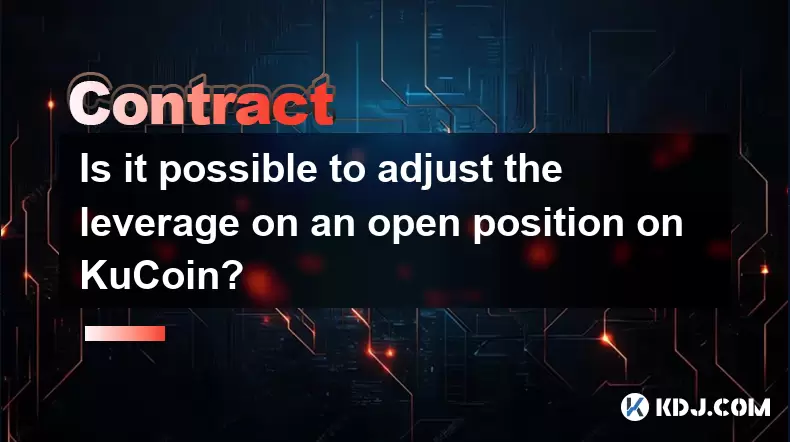
Is it possible to adjust the leverage on an open position on KuCoin?
Aug 09,2025 at 08:21pm
Understanding Leverage in KuCoin Futures TradingLeverage in KuCoin Futures allows traders to amplify their exposure to price movements by borrowing fu...
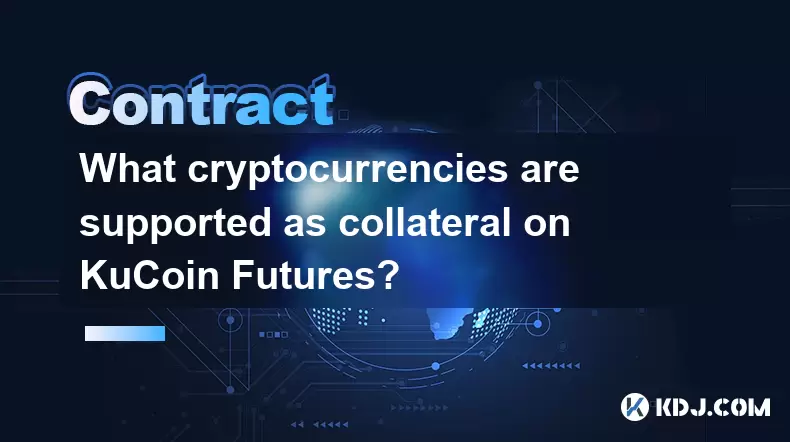
What cryptocurrencies are supported as collateral on KuCoin Futures?
Aug 11,2025 at 04:21am
Overview of KuCoin Futures and Collateral MechanismKuCoin Futures is a derivatives trading platform that allows users to trade perpetual and delivery ...
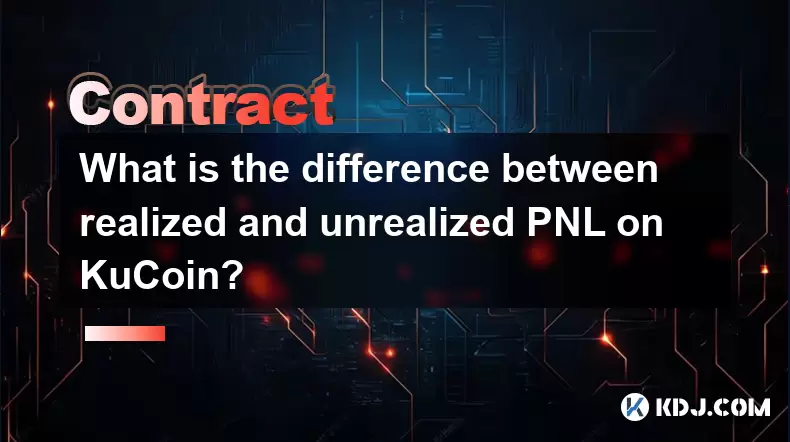
What is the difference between realized and unrealized PNL on KuCoin?
Aug 09,2025 at 01:49am
Understanding Realized and Unrealized PNL on KuCoinWhen trading on KuCoin, especially in futures and perpetual contracts, understanding the distinctio...
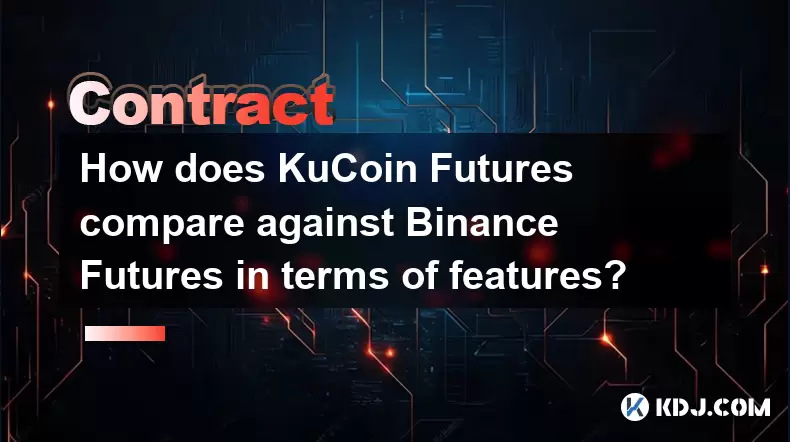
How does KuCoin Futures compare against Binance Futures in terms of features?
Aug 09,2025 at 03:22am
Trading Interface and User ExperienceThe trading interface is a critical component when comparing KuCoin Futures and Binance Futures, as it directly i...
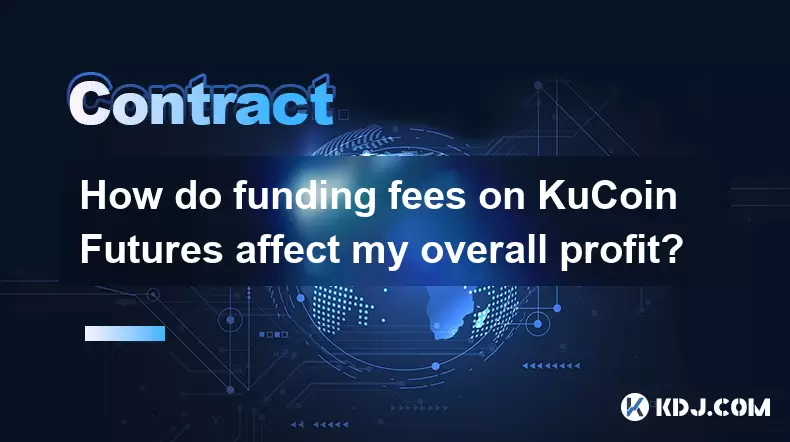
How do funding fees on KuCoin Futures affect my overall profit?
Aug 09,2025 at 08:22am
Understanding Funding Fees on KuCoin FuturesFunding fees on KuCoin Futures are periodic payments exchanged between long and short position holders to ...
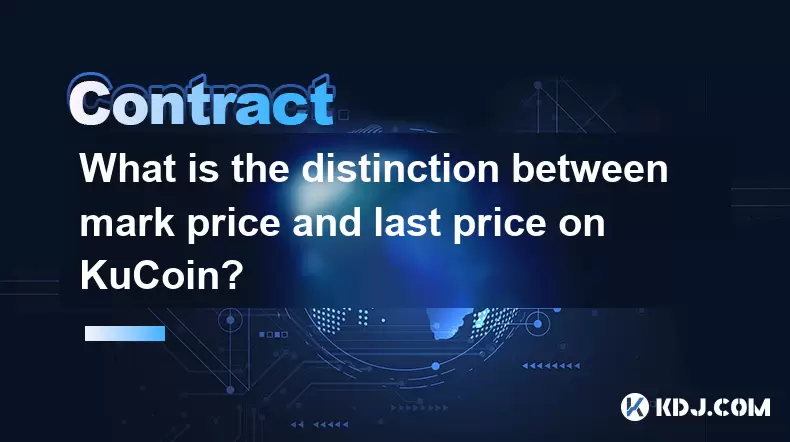
What is the distinction between mark price and last price on KuCoin?
Aug 08,2025 at 01:58pm
Understanding the Basics of Price in Cryptocurrency TradingIn cryptocurrency exchanges like KuCoin, two key price indicators frequently appear on trad...

Is it possible to adjust the leverage on an open position on KuCoin?
Aug 09,2025 at 08:21pm
Understanding Leverage in KuCoin Futures TradingLeverage in KuCoin Futures allows traders to amplify their exposure to price movements by borrowing fu...

What cryptocurrencies are supported as collateral on KuCoin Futures?
Aug 11,2025 at 04:21am
Overview of KuCoin Futures and Collateral MechanismKuCoin Futures is a derivatives trading platform that allows users to trade perpetual and delivery ...

What is the difference between realized and unrealized PNL on KuCoin?
Aug 09,2025 at 01:49am
Understanding Realized and Unrealized PNL on KuCoinWhen trading on KuCoin, especially in futures and perpetual contracts, understanding the distinctio...

How does KuCoin Futures compare against Binance Futures in terms of features?
Aug 09,2025 at 03:22am
Trading Interface and User ExperienceThe trading interface is a critical component when comparing KuCoin Futures and Binance Futures, as it directly i...

How do funding fees on KuCoin Futures affect my overall profit?
Aug 09,2025 at 08:22am
Understanding Funding Fees on KuCoin FuturesFunding fees on KuCoin Futures are periodic payments exchanged between long and short position holders to ...

What is the distinction between mark price and last price on KuCoin?
Aug 08,2025 at 01:58pm
Understanding the Basics of Price in Cryptocurrency TradingIn cryptocurrency exchanges like KuCoin, two key price indicators frequently appear on trad...
See all articles

























































































